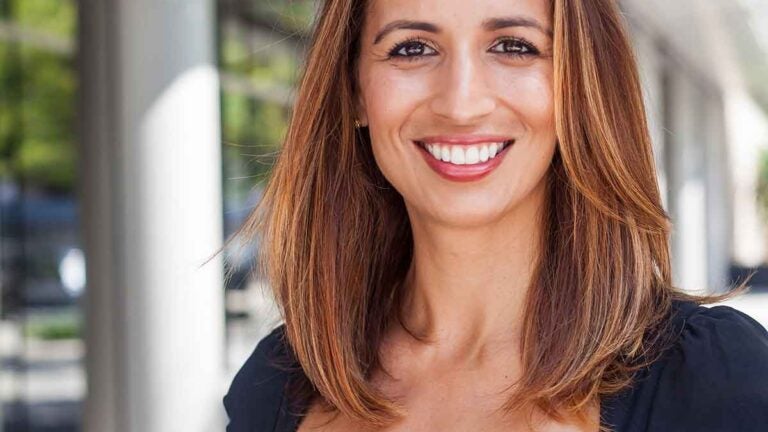
(Photo Courtesy of Jessica Lall)
Alumna Maps the Future of Downtown L.A.
As head of the Central City Association, a USC Dornsife graduate has her eye on transforming the Los Angeles landscape.
In the early 2000s, downtown Los Angeles’ revitalization—and future—was still in question. L.A. Live, Staples Center and the Expo Line hadn’t arrived yet and the historic core, after a decades-long decline, showed just a few hints of stirring. When Jessica Lall ’06 attended USC in the early 2000s, she remembers a completely different downtown from today—but one that showed great opportunities for growth.
The huge interest in downtown has exploded in the last decade, with the residential population more than doubling and the 5.8-square-mile neighborhood evolving with dozens of futuristic skyscrapers and hundreds of trendy restaurants, shops and entertainment venues opened or in development. And it’s all coming together as Lall heads Central City Association of Los Angeles (CCA), which represents 400 businesses, nonprofits and trade organizations. On a typical day as CEO, Lall juggles a variety of stakeholders with different motivations—from elected officials to developers and community groups—to increase investment and grow creative and tech industries downtown. She recently spoke with USC Trojan Family Magazine about what’s ahead.
You were student body president and studied political science and social science at USC. Was working for the city always part of your plan?
In college, I was more interested in politics at a federal level. But as I entered the workforce, I became more passionate about issues at the local level, because you can see the direct impact relatively quickly. It’s important to keep an open mind in your career because opportunities become available that you may never have even considered or known about.
At the South Park Business Improvement District, you oversaw public art programs. Do you envision adopting similar programs at CCA?
Los Angeles is the creative capital of the world, and downtown is the epicenter for arts and culture. Art can help create identity and build community, encouraging people to step outside and walk around. At CCA, we’re working on how to facilitate the best use of the 1 percent public art fee developers pay on their projects. We want to create a menu of options that includes sculptures, program-ming and murals. We want to encourage dialogue around these kinds of projects as downtown continues to evolve into a global destination.
What’s your take on gentrification and preserving the neighborhood’s historic character?
Maintaining the character of downtown L.A. is essential. It’s something we are in a position to advocate. When we look at downtown, there’s a balance of the new with the old, and I think there’s a way to bring innovation to historic areas without sacrificing their character. We’re working on updating the community plan and making sure that we preserve these areas. In addition, one of our top advocacy priorities is offering more housing at all income levels. We want to make sure that there is a diverse workforce that can be supported by the housing options in downtown.
What are some of the unexplored opportunities in the area?
With residential growth, there are great opportunities for us to engage with people as they’re moving in and explain the benefits of urban development. There are also many more opportunities for the retail industry in downtown, especially since the traditional approach to retail is changing. We can define what spaces mean for people as we work on key corridors, roads, bike-sharing programs, streetscaping and more.
How would you describe downtown L.A.’s identity today?
It’s unlike anywhere else in the city. It’s a mosaic of neighborhoods and people. We’re going to see a growing senior population as many retired folks decide to downsize their homes in places like Malibu or the Valley. They want to move into a place where they don’t need a car to get around and run their errands and have the cultural experience that downtown uniquely offers.
What’s next for the neighborhood?
There should be a place for families, singles and retirees—no matter what generation or socioeconomic level they’re from—in downtown L.A. To get there, we’re going to need more health care and schooling options, greater access to green space and public art.
